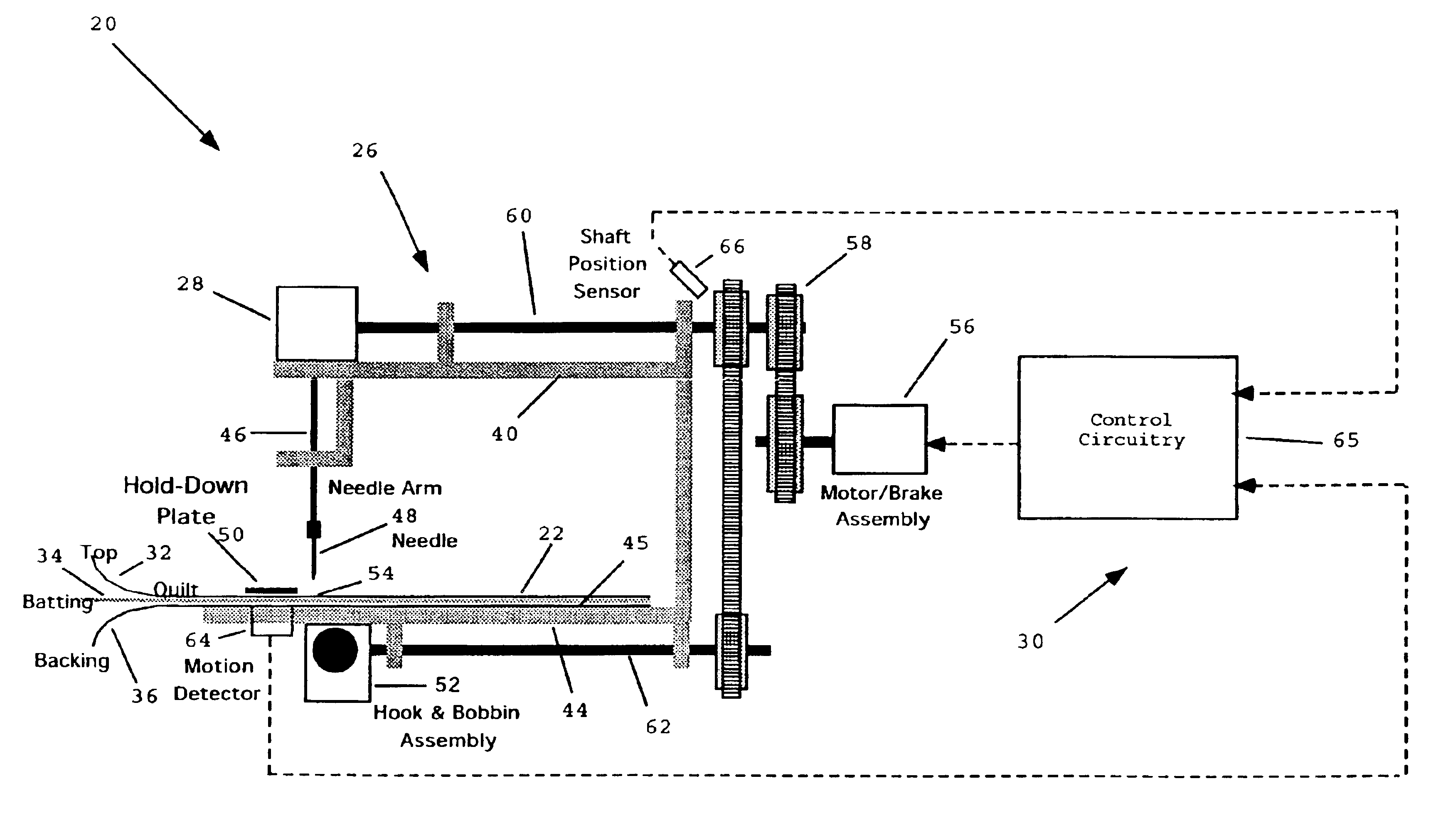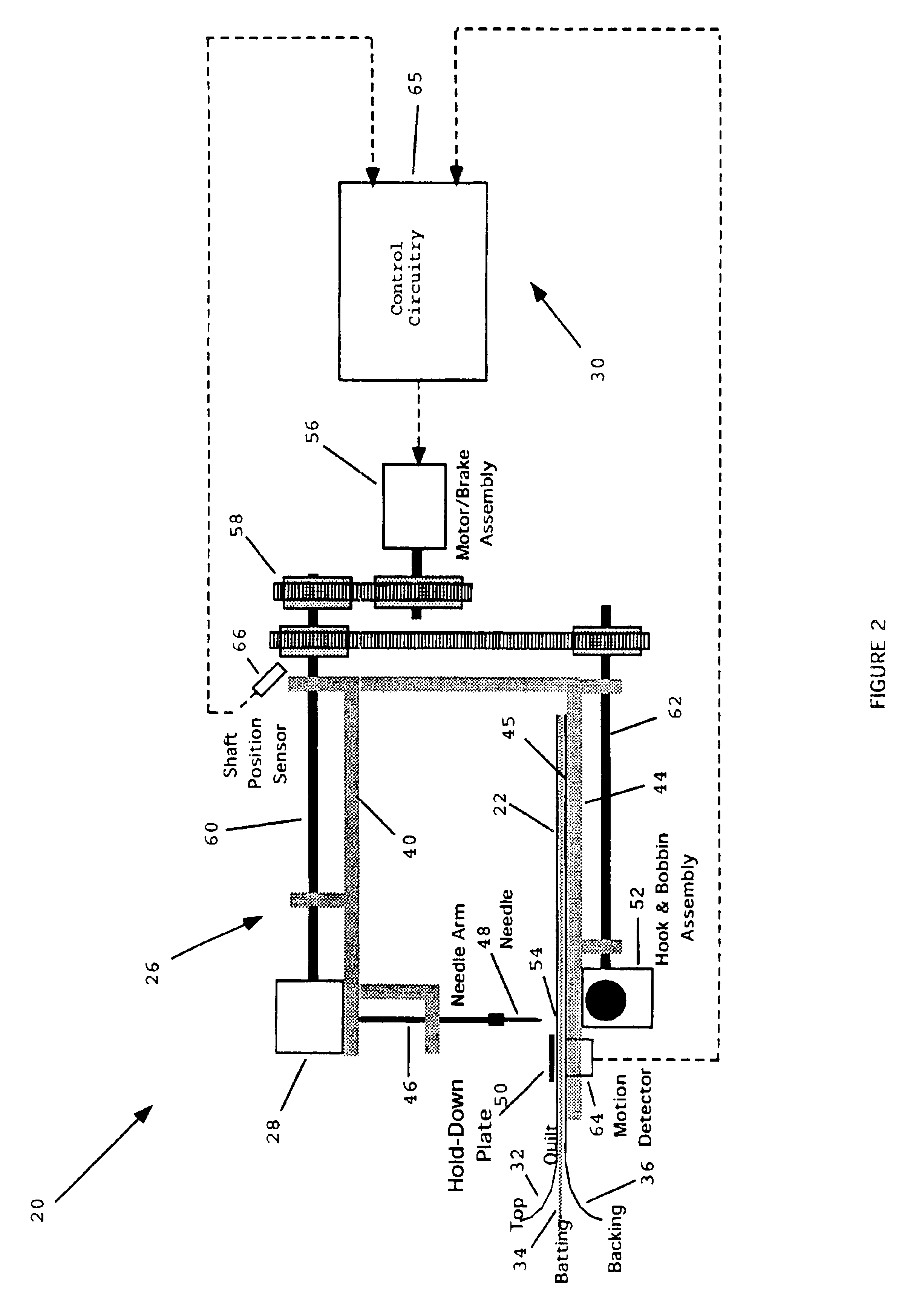Quilting method and apparatus
a technology of quilting and sewing machine, applied in the direction of sewing machine control devices, thin material processing, textiles and paper, etc., can solve the problems of requiring significant user skill, labor-intensive hand quilting process, and months of effort, and achieve free-motion quilting with a conventional sewing machin
- Summary
- Abstract
- Description
- Claims
- Application Information
AI Technical Summary
Benefits of technology
Problems solved by technology
Method used
Image
Examples
embodiment 68
[0043]FIG. 7 illustrates a second alternative system embodiment 68 which contains a mechanical machine portion 26′ and an electronic control subsystem 30′, similar to the corresponding portions 26 and 30 of the embodiment of FIG. 2. However, the embodiment of FIG. 7 differs from FIG. 2 primarily in that it uses a clutch / brake assembly 69 to control power transfer from motor 70 to the stitch head 28′, in lieu of the aforementioned motor / brake assembly 56 of FIG. 2. Additionally, the hook and bobbin assembly 52′ in FIG. 7 is driven continuously by motor 70 with the position of the bobbin hook (not shown) therein being sensed by a hook position sensor 71. The outputs of stack motion detector 64′, shaft position sensor 66′, and hook position sensor 71 are all applied as inputs to control circuitry 65′ whose output controls the clutch / brake assembly 69 to selectively actuate the stitch head 28′.
[0044]Attention is now directed to FIG. 9 which depicts a circuit diagram relevant to both the...
embodiment 175
[0055]With continuing reference to FIG. 12, note that the detector embodiment 175 is comprised of a housing 176 preferably mounted beneath the bed 144. The housing contains a light source 178 which transmits light through lens system 180 to produce a beam focused against the backing layer 36 of the quilt material stack 22. The reflected light from the backing layer is collected by lens system 182 and coupled to a photodetector 184. The photodetector 184 generates a detectable signal change for each thread crossing the focal point of the beam incident on the backing layer 36. The output of photodetector 184 drives an amplifier 186 to produce a pulse output 188 representing thread crossings, i.e., backing layer motion.
[0056]Attention is now directed to FIG. 13 which illustrates a circuit diagram of a control subsystem substantially identical to that shown in FIG. 9 except that it incorporates the optical motion detector 175 of FIG. 12 in lieu of the optical motion detector 64 of FIG. ...
PUM
 Login to View More
Login to View More Abstract
Description
Claims
Application Information
 Login to View More
Login to View More - R&D
- Intellectual Property
- Life Sciences
- Materials
- Tech Scout
- Unparalleled Data Quality
- Higher Quality Content
- 60% Fewer Hallucinations
Browse by: Latest US Patents, China's latest patents, Technical Efficacy Thesaurus, Application Domain, Technology Topic, Popular Technical Reports.
© 2025 PatSnap. All rights reserved.Legal|Privacy policy|Modern Slavery Act Transparency Statement|Sitemap|About US| Contact US: help@patsnap.com



